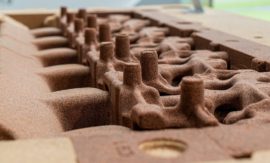Intended learning outcomes: Determine net requirements and planned release using the MRP technique, whereupon the physical inventory and gross requirements are given.
This exercise refers to Subsection 12.3.2. Following the example in Figure 12.3.2.2, determine net requirements and planned releases for item ID 4711. Assume an optimum order interval (or optimum length of order cycle) of 3 periods. The production or procurement lead time for item ID 4711 is 2 periods.
Given data or assumptions: a physical inventory of 700 (no safety stock) and the planned gross requirements by period of time as in Figure 12.8.2.1.
Fig. 12.8.2.1 Gross requirements.
As for the planned available inventory, please enter the result, including the planned receipts in each period.
Solution:
Course section 12.8: Subsections and their intended learning outcomes

12.8 Scenarios and Exercises
Intended learning outcomes: Calculate projected available inventory. Determine net requirements and planned release using the MRP technique. Differentiate between order point technique and MRP technique.

12.8.1 Exercise: Projected Available Inventory Calculation
Intended learning outcomes: Calculate projected available inventory by completing a grid.

12.8.2 Exercise on the MRP Technique: Determining Net Requirements and Planned Release
Intended learning outcomes: Determine net requirements and planned release using the MRP technique, whereupon the physical inventory and gross requirements are given.

12.8.3 Scenario: Order Point Technique versus MRP Technique
Intended learning outcomes: Explain how discontinuity or lumpiness of the demand influences the sum of carrying costs and setup and ordering costs, comparing the MRP technique with the order point technique.
